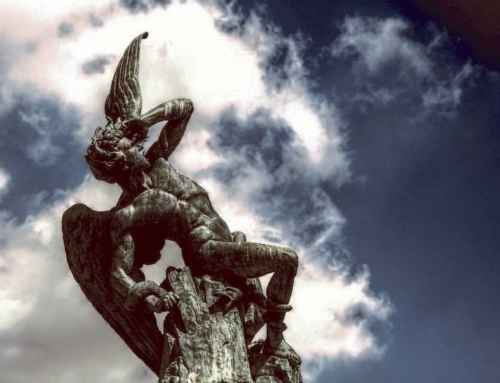One of the more challenging aspects of teaching or preaching through the gospels is trying to do justice to the text in front of you without ignoring what the other three gospel writers have to say regarding any given story. The four gospels, and especially Matthew, Mark and Luke often tell the same stories. Sometimes these stories are nearly identical, word-for-word. More often, there are details included in one or two but left out in a third. That’s why many scholars and Bible teachers have produced gospel harmonies, that is, accounts of the life of Christ that try to bring together the details in each account. This would be no different than someone, having heard the same story from three different eyewitnesses, re-telling that story by combining everything that he or she has learned from the three eyewitnesses.
Now, my goal as an expositional preacher is not first and foremost to produce that kind of harmony. My goal is to preach the text that I have in front of me and to communicate what that particular author intended to communicate. It may be that Matthew includes details that the other gospel writers leave out because he wants to emphasize a particular truth or element of the events that occurred. Or he may leave something out because that particular detail doesn’t affect the overall point that he is making. All of this is fine and well and a part of normal historical story-telling. No one writes down every detail of every event. However, many times those who have an axe to grind against the Bible will argue that the gospel writers contradict one another when the details of their stories vary. For instance, last Sunday I preached through Mark’s account of Jesus’ triumphal entry into Jerusalem. Mark tells us that Jesus rode into Jerusalem seated upon a donkey’s colt. However, when you read Matthew’s account of this same story he tells us that the disciples “brought the donkey and the colt and put on them their cloaks and he sat on them.” It doesn’t take a genius to spot the difference, and one could easily argue that Matthew and Mark contradict one another because Matthew says that there were two donkeys and Mark says that there was only one.
No so fast. Mark never actually says that there was only one donkey. He only mentions one donkey, the colt, but in reality a young colt would be very difficult to handle without its mother being present. One would expect both donkeys to be present if Jesus is to ride on the colt, because the colt would naturally follow its mother, which could be led much more easily. Matthew provides a detail that Mark does not, but Mark never contradicts Matthew. He never says that there was one and only one donkey. There were two donkeys, but for Mark’s purpose only the colt need be mentioned in order to highlight the humility of Christ juxtaposed against his kingly reception. Jesus is not only the Son of David, but the humble Son of David.
Matthew, on the other hand, wants to emphasize not only that Jesus is humble, but that his coming into Jerusalem is a very precise fulfillment of Zechariah 9:9, which says, “Rejoice greatly, O daughter of Zion! Shout aloud, O daughter of Jerusalem! Behold, your king is coming to you; righteous and having salvation is he, humble and mounted on a donkey, on a colt, the foal of a donkey.” Both donkey and colt are mentioned in the prophecy, and both were present at the Triumphal Entry, so Matthew mentions both in order to highlight this fulfillment of prophecy.
Never be too quick to dismiss differences between the gospel accounts of Jesus’ life as contradiction and error; rather, rejoice in the remarkable ability of each writer to often tell the same stories while drawing our attention to particular truths about Christ revealed in those real, historical events. Never be so arrogant as to think that while you have been able to discover obvious errors, biblical scholars for the past two millennia have missed them or failed to see their significance. Instead, listen to the very practical, wise explanations of these differences before you judge the Word of God.




